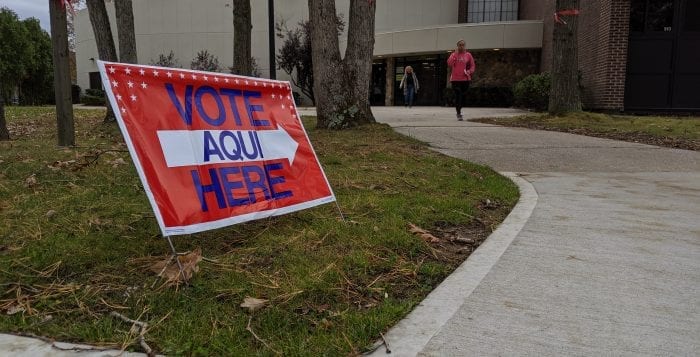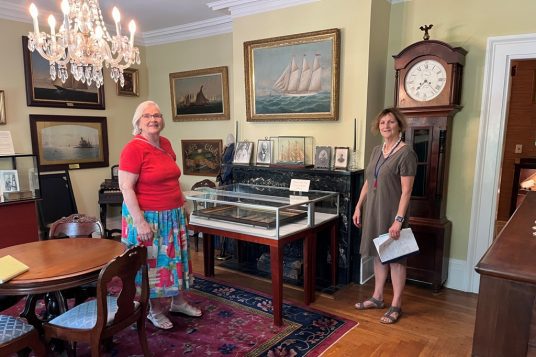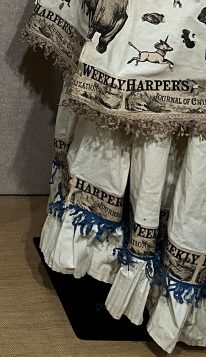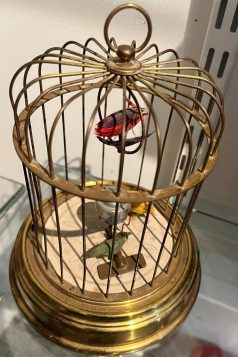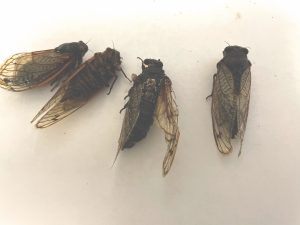By Sabrina Artusa
In anticipation of the June 17 vote, five candidates assembled at the Port Jefferson Village Center for a meet-the-candidates night, where they spoke on pressing village concerns and their leadership priorities. The mayoral seat and two trustee seats are open, as Mayor Lauren Sheprow and trustee Robert Juliano’s two-year terms are at an end and each are up for reelection.
The event, sponsored by the Port Jefferson Chamber of Commerce and the Civic Association of Port Jefferson, allowed each candidate to answer previously submitted questions from residents, with topics ranging from the East Beach Bluff Stabilization Project to transparency and communication.
Incomers Matthew Franco and Julie Vitrano are also vying for a trustee seat left vacant with the exit of Stan Louks. Franco has 10 years of experience in construction, is an occupational therapist and has worked with disabled children. “Most importantly, I want to bring honestly and integrity and decency back into village government,” he said
Vitrano is a real estate agent and mother of three sons. With her 20-years experience in the real estate industry, Vitrano said she is knowledgeable about code compliance and mindful of commercial development. ”Yes, I am a real-estate agent but that doesn’t mean I want to overbuild”, she said.
Juliano is finishing his first term, during which he was deputy mayor, commissioner of the Department of Public Works and liaison for the Parks and Recreation Advisory Counsel, Conservation Advisory Council and the Citizens Committee of Erosion. He was previously a clerk for the Village of Westbury and an administrator for the Village of Port Jefferson.
Former deputy mayor and two-term trustee, Kathianne Snaden is challenging Sheprow for mayor. In 2023, Sheprow defeated Snaden for the role, but Snaden said she is running to continue the service and to “bring back the heart and soul of the community.”
“At the end of this meeting,” Snaden said. “I think you will see that I am not only prepared to become mayor, but am already doing the work.”
As her term came to a close, Sheprow reviewed her policies and actions from the past two years and reiterated her position on issues such as the East Beach Bluff, the country club, flooding and transparency. She is the daughter of former Mayor Harold Sheprow and has raised her three children in the area. “Port Jefferson is on a better path because we have done the hard work together,” she said. “I am running for reelection because there is more to do.”
Development and schools
Candidates emphasize collaboration with the school district, which is facing declining enrollment and the loss of LIPA’s tax contributions. With many of the candidates having children that attended the district, they acknowledged its tremendous
To promote economic growth, Snaden spoke of several programs, such as an incentive initiative that would encourage residents to shop in the village through monthly events, a punch card, or a village-specific app that serves as a guide for residents and tourists while also promoting businesses.
Sheprow, who created the Economic Opportunity Task Force, said shop-front vacancies aren’t as big an issue as the larger vacancies like the Gap building and McDonalds might suggest, with the real number being around 9%. The task force works with the Business Improvement District to determine what shops would be appropriate.
In 2013, the village created a comprehensive plan intended to guide village development for the following two decades. However, Sheprow said it may need an upgrade: an idea reiterated by Juliano, who said uptown development was one of the three major concerns in the village.
“We can make all the plans we want but we have to make sure to put them into place,” he said, promising to work with Planning Commissioner Andrew Freeling to get uptown “to what we want.” A plan could help guide developers and provide a framework for unity in the village, balancing both respect for the village’s history and intentional progress.
“We have to make sure they bring in businesses that are going to attract people to the community and revitalize some of Port Jefferson,” Franco said
“I can only name five rental offices or spaces that are vacant,” said Vitrano. She added that more festivals and events throughout the year would help “bring the society back to the village”.
Bluff and country club
Of the candidates, Franco was alone in speaking definitively against proceeding with the bluff project. He argued the town was simply buying time against the inevitable environmental deterioration of the area. “The real problem is that we are never going to beat Mother Nature…I don’t think we should spend millions of dollars of hard-earned taxpayer money to buy time,” he said, noting the continuing maintenance the wall would require.
Juliano, the liaison for the Citizens Committee on Erosion, said they are meeting with engineers every two weeks and waiting for their proposed plan for the final stage of the bluff project. “We don’t know what the other part of the project will look like,” he said. After those results come in, they will make an educated decision. Sheprow confirmed: they do not know what the following steps will constitute.
Vitrano, on the other hand, said she does not believe Phase I should have been approved without a “clear plan from the engineers.” Since it began, she said, the project has been entrenched with “questionable spending” and called for a public referendum before Phase II is considered. She stated needing to look at reports before making a decision on future bluff projects.
Snaden argued the public was not involved enough throughout the process and that the current board is not truly exploring all options. The additional fiscal stress from losing LIPA’s contributions to the tax base concerns Snaden, so she said embarking on the expensive bluff project may not be in the village’s best interest.
Juliano said they don’t even know how much the next phase will cost, and the loss of long-term revenue from the country club should be taken into account when weighing the monetary pros and cons.
Juliano said she is not committed to the bluff project and does not “have a plan ready yet” as she continues reviewing documents and plans with the engineering firm GEI. “We are challenging the engineering firm on every level,” she said, adding that she welcomes her constituents asking “the tough questions.”
With Lessing’s Hospitality Group entering a new contract to lease the Port Jefferson Country Club, Franco protested the lack of stipulations requiring a restaurant; he listed the contract as one of the village’s three major issues. “There is no pressure to operate a restaurant…and we will be choked by that contract for a very long time,” he said.
Snaden said the club “must become a self-sustaining community asset.” Lessing’s contract is doing just that, according to Sheprow, who said the previous contract was an “exhaustive liability” and Lessing’s, who operates restaurants at parks like Sunken Meadow State Park, is “committed to doing something really good.”
Transparency
Sheprow said she initially wanted to run after not being included in a vote on a $10 million bond during a time Snaden was on the board. Snaden responded that several public sessions were held before the vote took place. However, Sheprow criticized the lack of conversation and openness of the town hall at that time. “There was a lack of fiscal management [and] a lack of town hall,” Sheprow said.
Snaden and Franco said Sheprow has not made vital bluff reports accessible to the Citizen’s Commission on Erosion, delaying the completion of their interim report. Franco said the reason for the delay is because the report advised for moving the building back. Jiuliano acknowledged a delay in providing some reports, but said they were going to hear the report the next day and will post it online thereafter.
Increasing the accessibility of village hall is a point of pride for Sheprow, Snaden and Juliano, who host sit-downs once a month where residents can speak about their concerns or ask questions.
Snaden addressed an accusation that she unethically accepted money from the village taxpayers for photographs she took of the Dickens Festival; however, she said she recused herself from the vote that resulted in a village payment to her and it was included on the auditor’s report. “Everything was done in public,” she said.
The upcoming election is preceded by fierce campaigning and fiery online and public discourse that was alluded to several times during the event. Before introducing himself, Franco condemned the “slanderous nonsense” and accused Vitrano of causing his family embarrassment.
Vitrano, in her closing statement, made similar claims, saying members of the village were attempting to coerce her to not run. She said, “I’ve been told what to say, what not to say, who I should associate with and even who not to be friends with.”
“This is not how our community works,” she said. “This is not how democracy should operate. This is nonsense and it needs to stop, no matter who wins this election.”
Snaden promised to revamp the public safety department if elected. “Currently we don’t have a public safety department,” Snaden said. “Our former code enforcement that prioritizes public safety and the safety of our community now focuses on parking tickets and building code violations. I want to bring an all new public safety department to our village.” She said she would also promote collaboration with the Suffolk County Police Department. Vetrano agreed a bigger police presence is necessary.
Juliano told the audience that, by law, the code enforcement cannot pull vehicles over. Sheprow said that enforcing the ordinances is an essential part of ensuring the code and that the village recently hired 11 new officers. “There are plenty of ordinances to enforce in our village code so they have their hands full,” she said.
The election is on June 17 at the Port Jefferson Village Center from 6 a.m. to 9 p.m.







